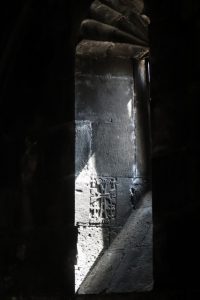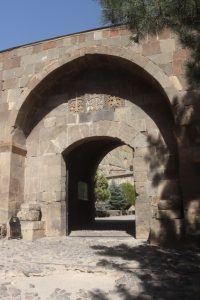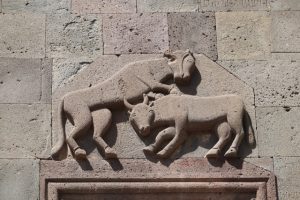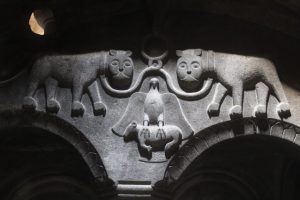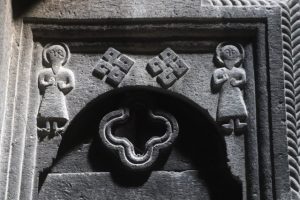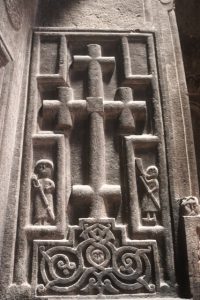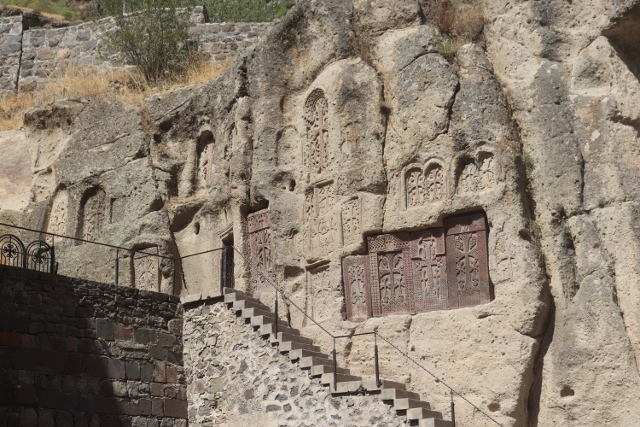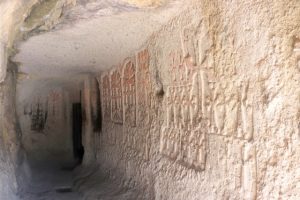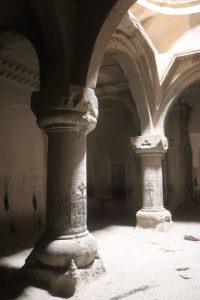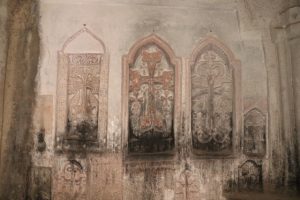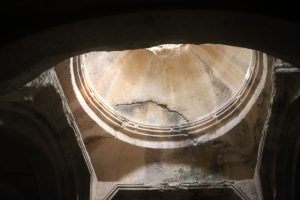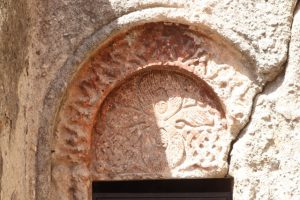The first church at this location is probably early 4th Century, part of what was called the Ayrivank, meaning cave monastery – suggesting that the first man-made caves were this early. However, the current cave churches are of a later date, the second one thought to have been completed in 1283. Both cave churches can be entered through the gavit, a 1225 addition to the main church, built 10 years earlier.
The first cave church is pretty bare, and is mostly of significance because of the spring, for which long queues form with people keen to score some holy water. The second one is much more elaborate, and preceded by a mausoleum with lots of great bas-reliefs, of crosses, but also of animals. Like the cave church, it is entirely cut out of the rock, and every detail, every column, is a deliberate left over, rather than a later construction. The third ‘main cave’ can be reached by stairs cut out of the rock, and a covered passage, decorated with khachkar carvings. This is not a church, but the mausoleum for the family that was also responsible for the cave churches. The mausoleum is actually higher up in the rock, so that through holes you can look down again in the cave churches below.
This is really a fabulous complex, reminiscent of rock churches in Ethiopia, for instance. Apparently, there are many more caves, many with further carvings, which, however, due to time constraints we didn’t explore. After all, we were on the way back.
